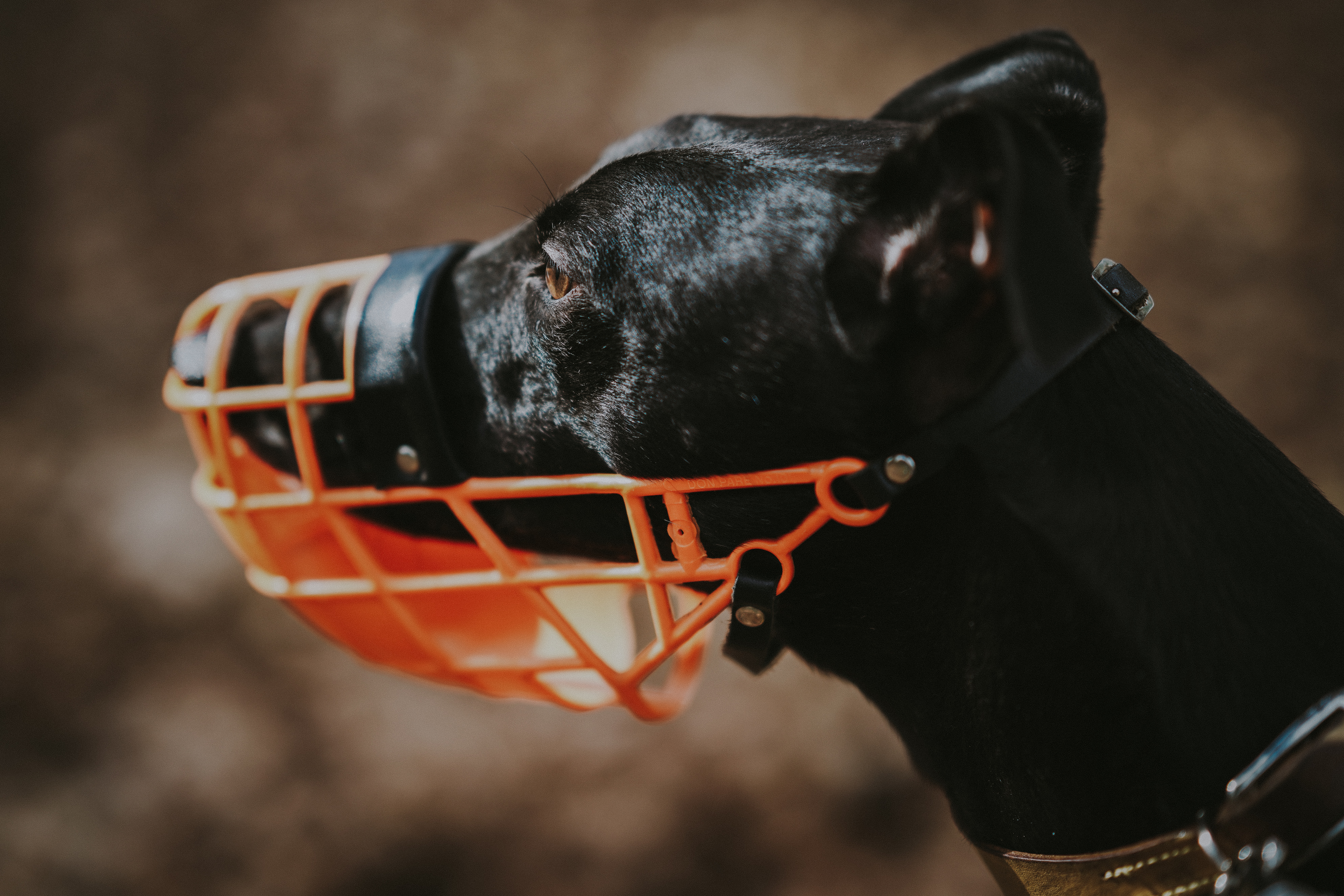Wearing muzzles in the vet clinic

Written by Dr Dennis Wormald,
Last updated 2024
Some dogs might need to be muzzled when they visit the vet, for the safety of staff when handling. Fear and pain can make any dog bite, so wearing a muzzle as a preventative is a smart and practical approach. Dogs can learn to happily wear a muzzle, as long as we go about it the right way. It's important to start muzzle training at home, well in advance (1 month ideally) of any veterinary visits. To begin with, we will talk about the kinds of muzzle that you can get.
-
Basket muzzle.
These muzzles are the best. They have a wire or plastic mesh that sits around the dog's face. In most cases, they are the best muzzle to use for the veterinary clinic. They are the safest for the dog to wear as they allow them to breathe easily, pant and drink water. If supervised by you directly, it can be safely worn for hours at a time. It is important to ensure that the muzzle is fitted correctly to the size and shape of the dog's face, and this can be difficult if you do not research it first. These muzzles can be more difficult to fit onto short nosed dogs, and custom made ones are often required in this case. Take time to research and find the right sized/shaped basket muzzle for you dog.
-
Fabric muzzle.
Generally not recommended. These muzzles wrap around the dog's face and keep the mouth from opening, they have a hole in the nose that they can breathe through. Dogs cannot pant or drink while wearing these so they are unsafe and unsuitable for prolonged use (no more than 2 minutes in hot weather, or 5 minutes in cold weather), or when unsupervised. They are most useful for short procedures such as when having a procedure done at the vet. The advantage is that they are cheaper, and that they are more forgiving when selecting the size and shape of them. These muzzles should never be used on a dog that is already panting, as it prevents them from opening their mouth.
Advice for owners before starting muzzle training:
Once you have a suitable muzzle, the next step is to introduce it to your dog in a safe and non-threatening manner. This must be done in a safe place (somewhere at home) where the dog is not fearful and does not usually display aggression. It is strongly recommended that you have your dog trainer guide you through this protocol for optimum safety if handling your dog's head can cause aggression. You must be able to stroke the head in this location without your dog displaying any aggression towards you before try this protocol - you will need professional help if you can't do this training safely. If at any point your dog becomes aggressive towards you, you need to go back a step in the protocol below, to prevent the aggression. If your dog is accepting the traing well, you may be able to go through the steps faster than is recommended below (one week per step).
Protocol for owners to muzzle train their dog:
- For the first week, spend 2 minutes per day sitting with your dog and showing them the muzzle, while rewarding them every 10 seconds (e.g. a treat, or some peanut butter etc.). Dog not attempt to place it on them yet. This is to form a positive association.
- For the second week, spend 5 minutes per day letting your dog lick a small amount of something tasty like peanut butter from the inside of the muzzle while you hold it still. As they finish licking it, you can also try feeding small treats through the holes in the muzzle. Do not attempt to clip the muzzle straps on, however you should allow them to put their head inside the muzzle to get the food if they want.
- For the third week, repeat the step above, ensuring they have to put their nose all the way into the muzzle to accept the treats. If they will accept it, you should fit the muzzle into the correct position on their face while they are eating. You can occasionally attempt to fasten/clip the muzzle strap on their head, then immediately take off the muzzle and reward them. This gets them used to the clipping on/off process.
- For the fourth week, spend 5 minutes per day placing the muzzle onto your dog, and clipping the strap into place, then start constantly giving them treats through the nose the entire time. At the end of the 5 minutes remove the muzzle and give them more treats.
At this stage your dog should be muzzle trained, the next step is to have them allow you to place it on in different locations such as the vet clinic. You should also regularly repeat the last step of this muzzle training at times other than when you need to use the muzzle, so there are lots of good memories associated with it. Remember to only leave the muzzle on when you are right there next to your dog, and always give regular treats through the muzzle while it is on.